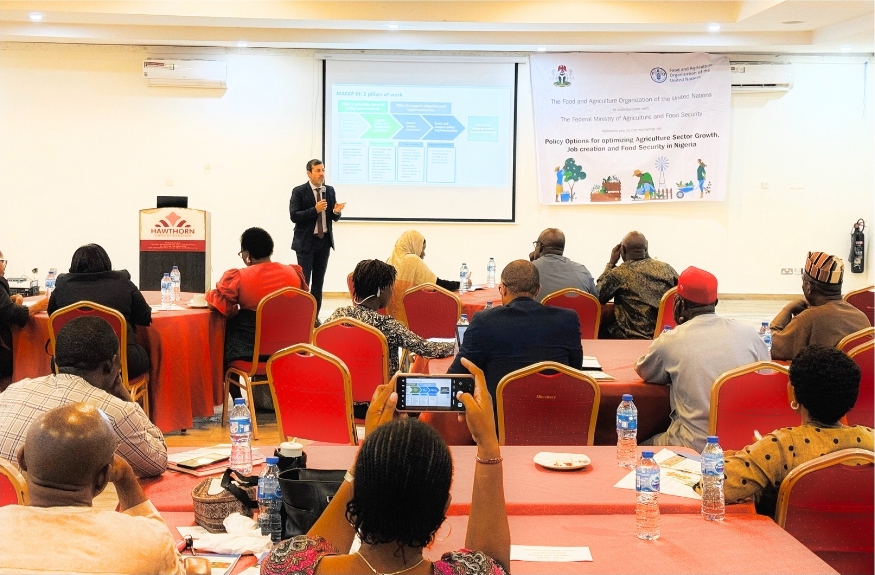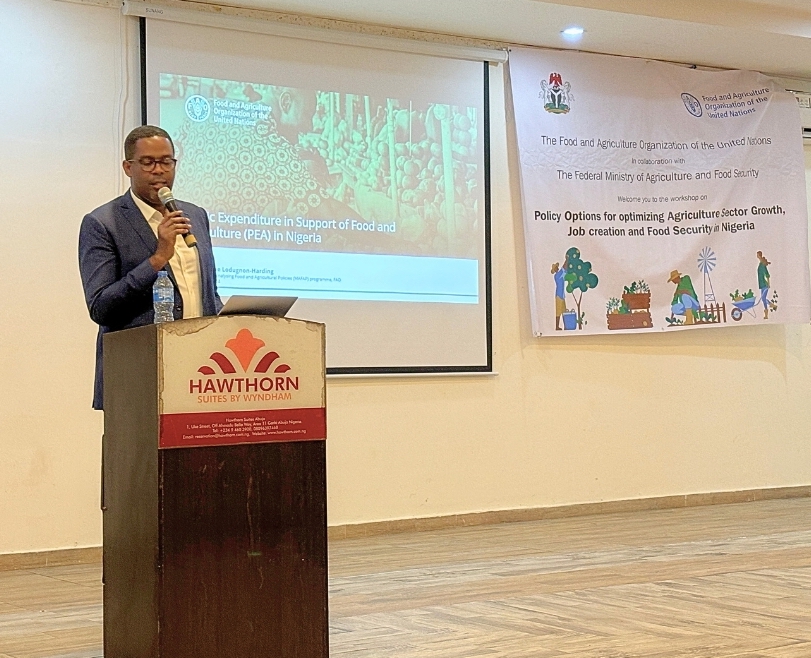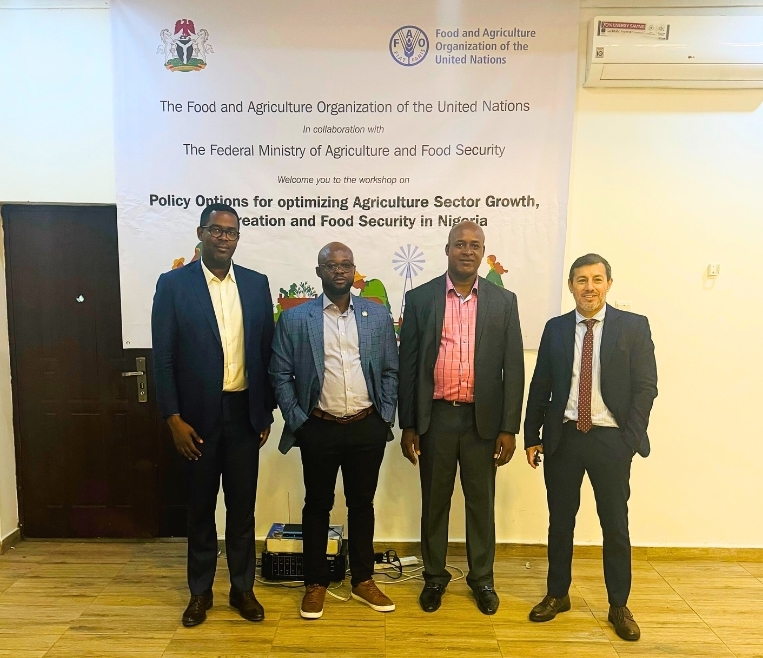MAFAP and Nigeria hold joint workshop in Abuja to advance agrifood policy support
Nigeria’s Federal Ministry of Agriculture and Food Security, FAO in Nigeria and the MAFAP Programme brought together government officials and policymakers from several institutions to discuss results of analyses on public expenditure in the agricultural sector and commodity price incentives, and showcase a newly-developed economy-wide modelling tool to optimize the allocation of federal spending on food and agriculture.

FAO's Monitoring and Analysing Food and Agricultural Policies (MAFAP) programme, FAO in Nigeria and the Federal Ministry of Agriculture and Food Security (FMAFS) organized a workshop on 6th June 2024 to discuss the findings from a series of policy analyses and to present a new economy-wide modelling tool to the Government of Nigeria.
The joint FAO-FMAFS workshop, entitled “Policy Options for Optimizing Agriculture Sector Growth, Job Creation and Food Security in Nigeria”, took place in Abuja, and gathered over 35 policymakers and government officials, including the Federal Ministry of Finance and the Federal Ministry of Industry, Trade and Investment.
The day-long workshop, which was opened by the Director for Planning and Policy Coordination at the FMAFS, Ibrahim Tanimu, served as policy engagement forum to discuss analyses carried out over the last few years by the MAFAP programme.

Marco V. Sánchez, Deputy Director of Agrifood Economics and Policy at FAO then gave a refresher of the MAFAP programme.

And Manson Nwafor from the MAFAP team followed on with a presentation of the first analysis of the day, on commodity price incentives. He then gave the floor to MAFAP team's Jean-Philippe Lodugnon-Harding, who presented an analysis on federal public spending on food and agriculture, covering the years 2015–2021.
 |  |
Price incentives for 5 key commodities
The analysis covered cashew nuts, cocoa, maize, rice and sorghum, looking at how domestic policies and market dynamics affect prices for farmers. One of the findings coming from the analysis found that generally rice farmers received higher prices than international reference prices, whereas cocoa and maize farmers generally fetched lower-than-reference prices between 2005 and 2021.
Nigeria’s public spending on food and agriculture
The analysis found that Nigeria’s budget for food and agriculture consistently increased over the years from NGN (Nigerian naira) 359 billion in 2015 to NGN 2.1 trillion in 2021, while only representing on average, 6% of total federal spending using the MAFAP definition of agricultural spending and 2% using the more restrictive African Union’s approach. This is far from the Africa-wide CAADP target of 10%. It also found that there was an emphasis on agriculture education and research compared to extension and agriculture infrastructure, which are critical for improving agriculture productivity.
The bulk of spending went to agriculture-supportive expenditures (76%), which represent expenditures to areas that have a strong influence on the performance of agriculture and rural development such as rural education, health and infrastructure. Within the remaining 24% which account for spending benefiting only the agriculture sector, the largest chunk of spending went to knowledge transfer (education and farmer professionalisation), followed by agriculture research and agriculture infrastructure.
Overall, the largest portion of monetary transfers to agents of the sector were made to consumers within the framework of school-meals programmes. Almost 80% of spending in the agriculture sector was spent on crops, 10% on livestock, 6% forestry, and 5% on fisheries.
Prioritizing policy options
The afternoon then turned to a presentation on MAFAP’s new state-of-the-art economic modelling tool, which has been designed to help countries get the best value for money by optimizing how the country spends on food and agriculture in order to bring across-the-board economy-wide benefits.
Marco V. Sánchez explained the tool, its preliminary results and scenarios where spending is optimized to deliver on 4 development objectives: Increasing agrifood GDP, creating more off-farm jobs in rural areas, reducing rural poverty, and allowing more people to afford a healthy diet
The workshop came off the heels of a ministerial meeting between FAO and FMAFS, where FAO Deputy Director of Agrifood Economics and Policy Marco V. Sánchez and FAO Representative in Nigeria a.i. Koffy Dominique Kouacou met the Minister of State for Agriculture and Food Security to discuss MAFAP's policy work in the country.
Next steps
The MAFAP team will now work with the government and advance the prioritization work by jointly designing additional scenarios in order to have more options for policymakers.
The full policy monitoring review (PMR) report on Nigeria, containing the above analyses, is due to be published in Q3 2024.

Contact
Manson Nwafor MAFAP Focal Point in Nigeria [email protected]
Jean-Philippe Lodugnon-Harding Policy Analyst [email protected]
